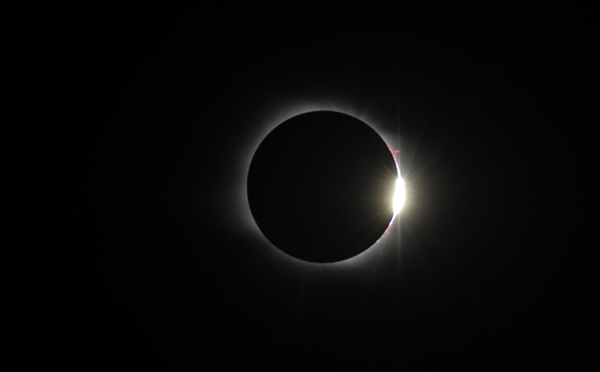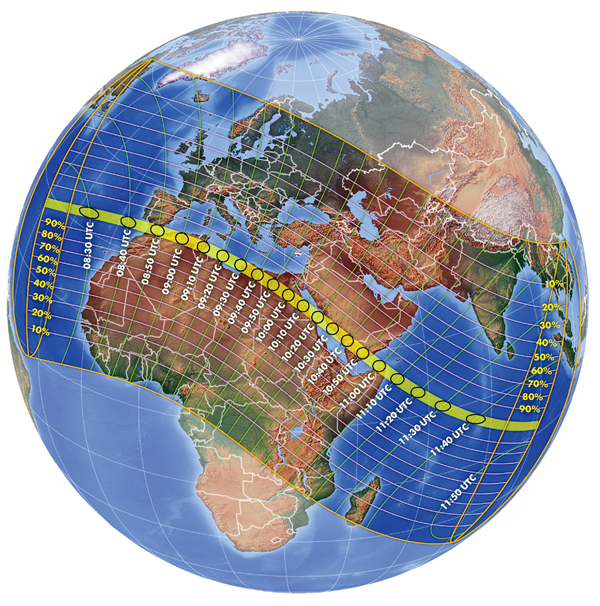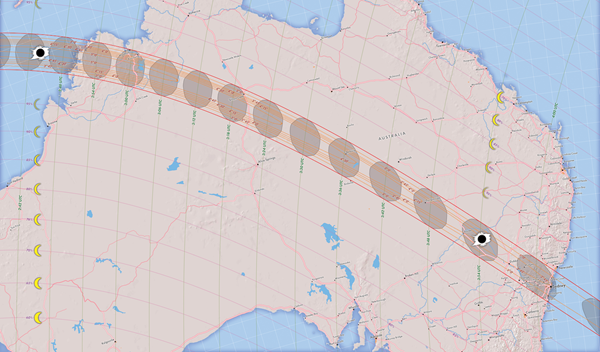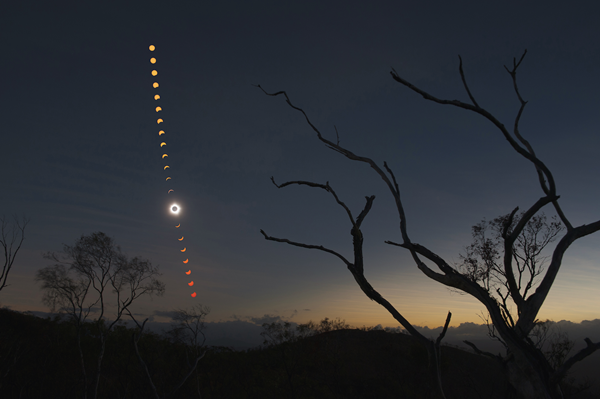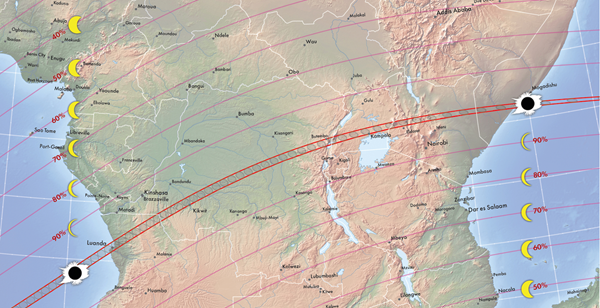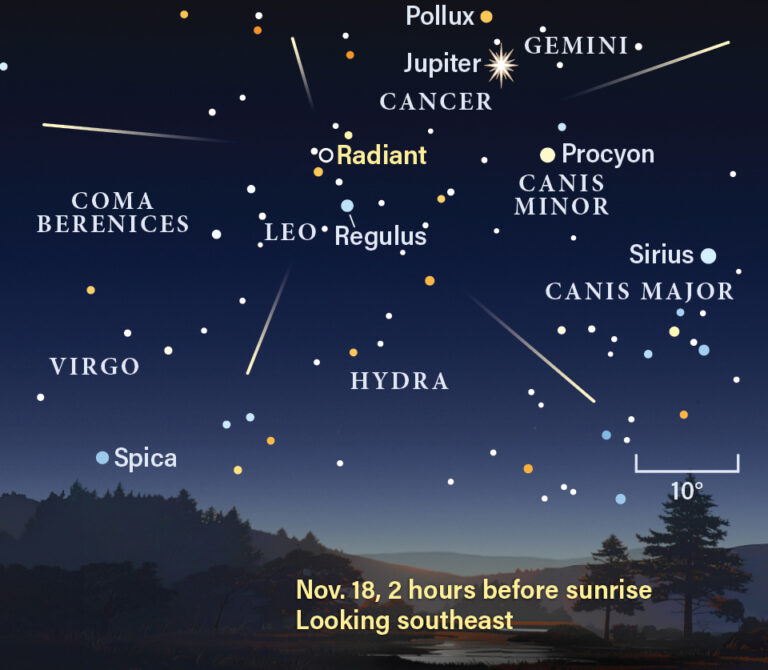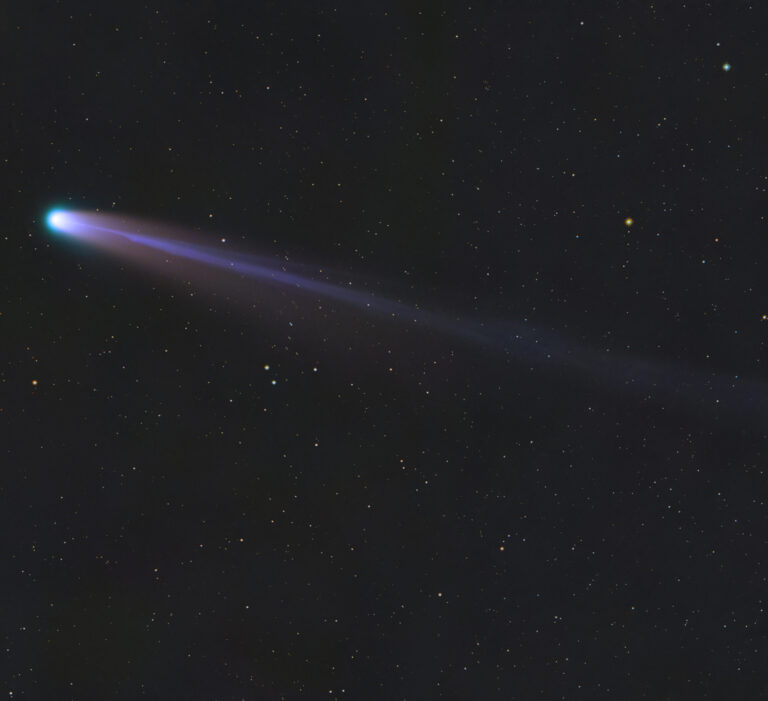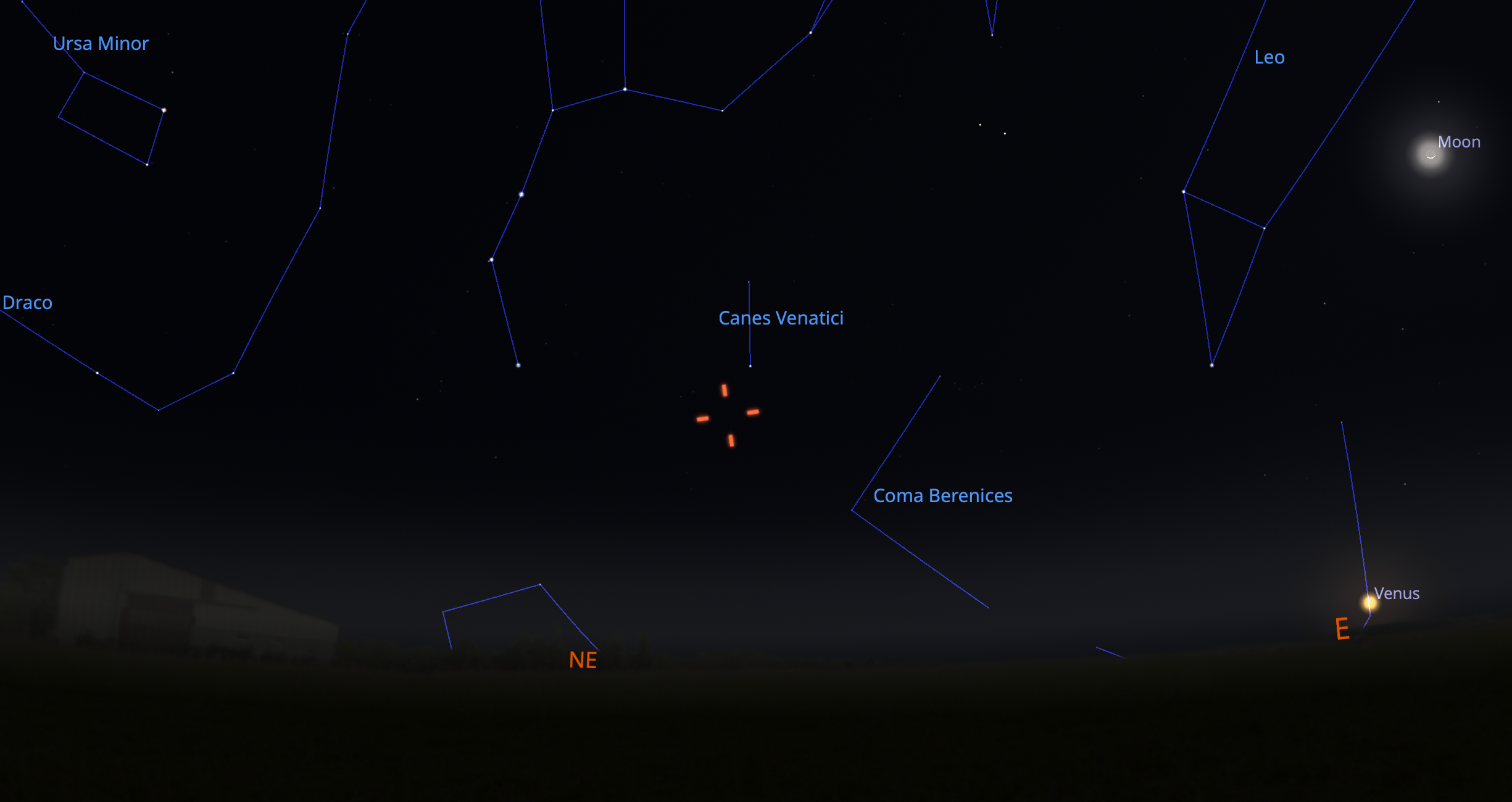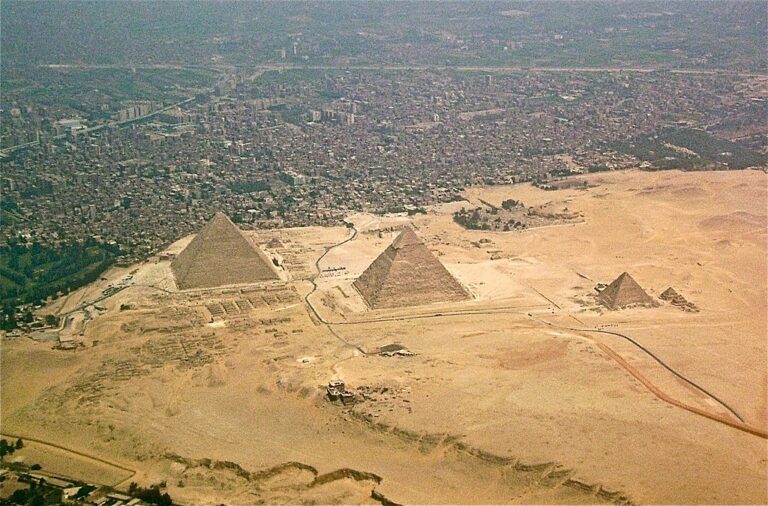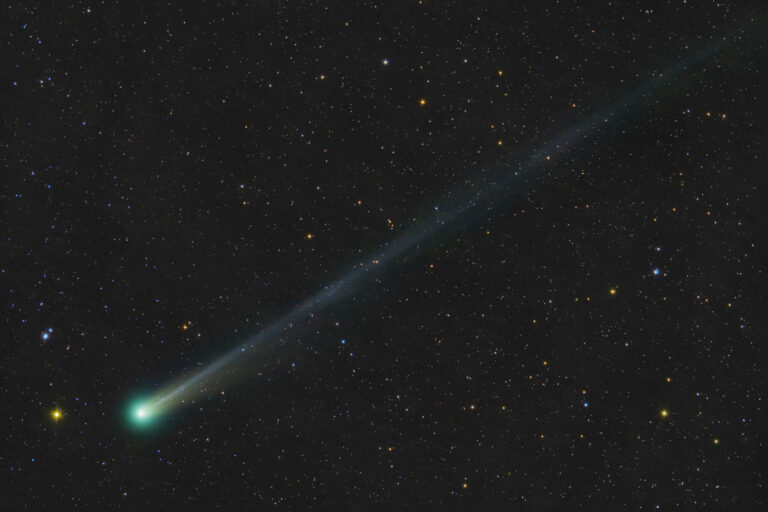Key Takeaways:
Astronomers have calculated when eclipses will occur for the next millennium and beyond. So, we know that the next 20 years contain 15 total solar eclipses. Two offer totality in excess of five minutes. Two others have totalities lasting more than four minutes. And two are hybrid eclipses, which exhibit both annular and total phases. But all are worth seeing.
I’ve listed the eclipses chronologically. Pick those that interest you and start making plans. For detailed information, visit NASA’s eclipse website at http://eclipse.gsfc.nasa.gov/eclipse.html. For the best maps of upcoming eclipses, head to www.GreatAmericanEclipse.com.
No matter how much this article and all your planning build up your expectations, a total eclipse will never disappoint.
April 20, 2023
The Moon’s shadow during this eclipse will touch three countries: Australia, Timor-Leste, and Indonesia. The maximum duration of totality is 1 minute 16 seconds.
The umbra first encounters Australia at the Ningaloo Coast, a popular destination for tourists. Accommodations are about 60 miles (100 km) to the north at Exmouth, which will receive 54 seconds of totality.
Continuing to the northeast, the umbra next encounters Timor-Leste (or East Timor). Unfortunately, the capital city of Dili lies outside the path. Viewers on the island’s eastern end will see a totality lasting only a few seconds less than the maximum duration.
Totality then moves to Indonesia at Kisar Island. The roughly 7,000 residents of the main town, Wonreli, will enjoy 1 minute 2 seconds of totality. Finally, the umbra reaches Western New Guinea. Throughout this province, totality will last 1 minute 8 seconds.
April 8, 2024
Because this eclipse crosses the U.S. from Texas to Maine, it may become the most viewed celestial event in history. The maximum duration of totality is 4 minutes 28 seconds. And because we’ll write about it in great detail as the date approaches, that’s all I’ll say about it here.
Aug. 12, 2026
Totality will touch five countries with a maximum duration of 2 minutes 18 seconds. First up are the Saint Peter Islands of Russia. The climate in this uninhabited region is severe. Even in August, the Laptev Sea is usually obstructed by pack ice. Few, if any, people will see totality from Russia.
The umbra then heads over the Arctic Ocean to the least densely populated territory in the world — Greenland. During its trip over Earth’s largest island, the Moon’s inner shadow encounters no cities or towns. As with Russia, few people will view totality from Greenland.
The situation is different in Iceland. Several coastal locations lie near the longest totality. Fortunately, the Moon’s umbra will cover southwestern sections of Reykjavík for 1 minute 7 seconds.
Only a minuscule part of Portugal will be covered by the umbra. Head to the border with Spain to view 21 seconds of totality. In Spain, the duration of totality will stay above 1 minute 39 seconds along the center line the whole way, but the Sun’s altitude is low. The largest city in the umbra will be Zaragoza, where residents will experience 1 minute 23 seconds of totality with the Sun 6° high.
Aug. 2, 2027
This eclipse, whose umbra will touch a dozen countries, offers the longest totality anyone now alive will see — a whopping 6 minutes 23 seconds. The umbra encounters, in order, Morocco, Spain (where totality at the Rock of Gibraltar will last 4 minutes 26 seconds), Algeria, Tunisia, and Libya.
Although many eclipse chasers may head to these locations, more will watch the spectacle from Egypt. Combining a tour of this country’s wonders with the eclipse will be a dream come true. Here’s where the eclipse reaches its peak and where weather won’t be a factor. Unfortunately, totality misses the two largest cities, Cairo and Alexandria.
Greatest eclipse will occur not quite 40 miles (64 km) southeast of Luxor with the Sun a scant 7° from the zenith. How could this experience possibly be any better? Well, imagine viewing this spectacle standing outside Karnak, the great temple complex near Luxor (losing less than 2 seconds of totality). Next to the pyramids at Giza, Karnak is the most visited historic site in Egypt.
In Saudi Arabia, Jeddah will enjoy more than 6 minutes of totality. And with a total average August rainfall of 0.02 inch (0.05 centimeter), conditions should be excellent for the 4 million residents. The final three countries for this eclipse are Yemen, Somaliland, and Somalia. Along the center line in Somalia, viewers could see the Moon cover the Sun for 5 minutes 32 seconds at the northern coast.
July 22, 2028
During this eclipse, the Moon’s umbra encounters just Australia and New Zealand. Maximum duration of totality is 5 minutes 10 seconds.
After traveling more than 1,800 miles (2,900 km) over the Indian Ocean, the umbra makes landfall on Australia proper in Mitchell River National Park. The greatest duration occurs less than 125 miles (200 km) from there. The best bet for an eclipse chaser might be to base in Wyndham, then drive south on the Great Northern Highway for 5 minutes 3 seconds of totality. In New South Wales, a favorable location is Bourke, which will experience 4 minutes of totality. Another is Dubbo, which gets 3 minutes 46 seconds of totality.
Then the umbra hits Sydney, with its population of 5.2 million. The city’s numerous attractions offer many photographic opportunities. Perhaps the most sought-after location, and one with 3 minutes 44 seconds of totality, will be south of the Sydney Opera House. There, a camera could capture the Opera House with the eclipsed Sun 29° above it.
The Moon’s umbra then tracks to the South Island of New Zealand. From here, it will appear in the northwestern sky, so the west coast will have a sight line over water. Milford Sound, New Zealand’s most famous tourist destination, would be an ideal spot to set up shop. There, totality will last 2 minutes 50 seconds. The short path touches only one city, Dunedin, where totality will last 2 minutes 47 seconds with the Sun 8° high. Choose your site carefully because the central city is surrounded by a ring of hills.
Nov. 25, 2030
The path of totality during this eclipse touches five countries. Maximum duration of totality is 3 minutes 44 seconds. In Namibia, the shadow first touches the famous Skeleton Coast south of Torra Bay. A drive down the coast to the center line will yield a totality lasting 1 minute 51 seconds.
Most of the path of the center line through Botswana tracks within Gemsbok National Park. An eclipse watcher could get to the center line (2 minutes 10 seconds of totality) by driving the road that goes south from Lokgwabe or north from Tshabong.
South Africa surely will be the destination for thousands of eclipse chasers. Kroonstad, a city of around 200,000, offers a duration of totality of 2 minutes 22 seconds. From Bethlehem, whose population of 20,000 will surely swell on eclipse day, totality will last 2 minutes 25 seconds. At the coast of the Indian Ocean, the best destination might be Durban, where totality will last 2 minutes 21 seconds.
Lesotho experiences the eclipse in its northeastern region. Unfortunately, its capital, Maseru, lies south of the path and gets only a 99-percent partial eclipse. For that extra 1 percent, head north-northwest to the village of Kala, where totality will last 2 minutes 2 seconds.
In Australia, Calca and Streaky Bay will enjoy 2 minutes of totality. A good starting point for travelers is Adelaide, which lies 186 miles (300 km) south of the path. Those who drive north might consider continuing another 60 miles (100 km) to the Ikara-Flinders Ranges National Park. Careful positioning should produce spectacular pictures.
Nov. 14, 2031
The duration of totality for this hybrid eclipse (a combination of an annular and a total) is 1 minute 8 seconds, but that occurs in the central Pacific Ocean. In Panama, the only country the antumbra touches, annularity will last for 5 seconds with the Sun nearly scraping the west-southwestern horizon.
March 30, 2033
The Moon’s umbra during this eclipse encounters only the U.S. and Russia. Maximum duration of totality is 2 minutes 37 seconds.
The umbra first touches the U.S. at the southern tip of Pinnacle Island in the Bering Sea. There, totality will last 2 minutes, with the Sun 4° high at mid-eclipse. On the Alaskan mainland, only four cities have populations above 10,000, but none lie in the path. The best plan will be to base in Anchorage and take a flight to Nome, where totality will last 2 minutes 29 seconds.
The eclipse in Russia takes place entirely in the eastern end of the country. Only Lavrentiya and Lorino have populations approaching 1,000. Lavrentiya will experience 1 minute 58 seconds of totality, while Lorino gets 4 fewer seconds.
March 20, 2034
The path of the umbra during this eclipse will touch 13 countries. The maximum duration of totality is 4 minutes 9 seconds.
The Moon’s umbra first touches land at Porto-Novo, the capital of Benin. At the coastline of the Gulf of Guinea and the border with Nigeria, totality will last 1 minute 25 seconds.
The Moon’s umbra next enters Nigeria. Lagos, a city with a population in excess of 21 million, will experience 2 minutes 52 seconds of totality. A savvy eclipse chaser might drive north from Lagos just past Sagamu, and then head east to extend totality to 3 minutes 30 seconds.
The umbra quickly passes through Cameroon and into Chad. Within 25 seconds, darkness comes to N’Djamena, Chad’s capital and largest city. The roughly 2 million residents there will experience totality lasting 3 minutes 45 seconds.
The Moon’s inner shadow then tracks for 500 miles (800 km) within Sudan before it finds the first populated settlement on the banks of the Nile River. One possible base is Abri. It sits on the center line and offers 4 minutes of totality.
In Egypt, the best strategy is to head for the coast of the Red Sea. Shalateen gets 3 minutes 14 seconds of totality. Many trip providers will offer tours of Abu Simbel, with its spectacular temples built by Ramesses II. Anyone there will see the Moon blot out 99.9 percent of the Sun.
After the umbra crosses the Red Sea, it enters Saudi Arabia. The best views will be from the western half of the country. Along the center line, the duration of totality drops from 3 minutes 43 seconds there to 3 minutes 10 seconds at the Kuwaiti border.
Kuwait and Iran are next. Sabah Al Ahmad Sea City, an easy drive south from Kuwait City, offers 3 minutes 9 seconds of totality. Once the path touches Iran, it quickly arrives at Shiraz. Its population of near 2 million will experience between 2 minutes 17 seconds and 2 minutes 44 seconds of totality. In Afghanistan, the single city in the path is Khost, whose 100,000-plus residents will enjoy a totality lasting 2 minutes 9 seconds.
In Pakistan, Rawalpindi and the capital of Islamabad fall under the Moon’s umbra. Islamabad will enjoy 2 minutes 4 seconds of totality. Residents of Rawalpindi will get 10 fewer seconds.
Next is India. Srinagar, the country’s northernmost city with a population above 1 million, experiences a totality of 2 minutes 4 seconds. China is the final country the umbra will touch, but the eclipsed Sun will be near the horizon
Sept. 2, 2035
This eclipse will touch four countries, with a maximum duration of totality of 2 minutes 54 seconds.
In China, the first city under the umbra is Jiuquan, whose million residents will enjoy 51 seconds of totality. The 2 million inhabitants of Baotou will witness 49 seconds, and the 3.5 million in Datong will enjoy 1 minute 32 seconds. Then totality reaches Beijing, where the city center will experience a duration of totality of 1 minute 30 seconds with the Sun 32° high. Two more cities of note in the path are Tangshan (45 seconds of totality) and Qinhuangdao (1 minute 56 seconds of totality).
The shadow next moves into North Korea. It touches the outskirts of Pyongyang, where totality will last 1 minute 54 seconds at the northern end of the city. The umbra also covers Wŏnsan for 2 minutes 6 seconds.
In South Korea, eclipse watchers should head to the border with North Korea. At that point, totality will last 1 minute 44 seconds with the Sun over open waters toward the southeast.
Finally, the path leads to Japan, just south of Wajima. Four cities that would make good bases are Toyama, Nagano, Maebashi, and Takasaki. They offer durations of totality of 1 minute 47 seconds, 2 minutes 16 seconds, 2 minutes 13 seconds, and 1 minute 57 seconds, respectively.
Unfortunately, Tokyo lies just south of the path. From downtown, the Moon will cover “only” 99.5 percent of the Sun. With so many amateur astronomers in Japan, it’s certain that there will be a huge exodus northward from Tokyo.
July 13, 2037
During this eclipse, only Australia and New Zealand will experience the umbra. The maximum duration of totality is 3 minutes 58 seconds.
Totality comes to mainland Australia at Geraldton, where it will last 2 minutes 34 seconds. Drive 25 miles (40 km) south, and you’ll gain an extra 21 seconds. In nearly the center of Australia, one of the greatest opportunities to photograph the eclipse will take place when totality occurs at Uluru/Ayers Rock, a massive sandstone rock formation. There, it will last 3 minutes 4 seconds with the Sun 40° high in the north-northeast. Any imager on the south-southwest side of this site could capture the eclipsed Sun above Australia’s greatest natural wonder.
Finally, the path encounters Brisbane. This city’s southern limit will experience 2 minutes 20 seconds of totality. Mobile eclipse watchers won’t stop there, however. They’ll continue south, perhaps to Rathdowney, for 3 minutes 32 seconds of totality.
Finally, the umbra contacts New Zealand’s North Island. If possible, view the eclipse from the island’s western end. There, totality will last 2 minutes 22 seconds with the Sun 14° above an ocean horizon.
Dec. 26, 2038
As with the previous eclipse, the umbra will touch only Australia and New Zealand. The maximum duration of totality is 2 minutes 18 seconds.
It enters Australia at Onslow, which sits on the country’s west coast. Anyone there will see 1 minute 4 seconds of totality. A good base will be Adelaide. Eclipse chasers heading north from there, perhaps to Burra, will enjoy 1 minute 53 seconds of totality. And at Mallacoota, which lies on the southeast coast, totality will last 2 minutes 9 seconds.
In New Zealand, the Moon’s umbra touches the northern tip of the South Island, as well as the southern part of the North Island. Savvy eclipse chasers might base in the country’s capital, Wellington, and then head north to the center line near Foxton, where totality will last 2 minutes and 12 seconds.
Dec. 15, 2039
This eclipse will be a tough acquisition for most people because it only touches Antarctica. Maximum duration of totality is 1 minute 51 seconds. The umbra misses McMurdo Station, the continent’s largest settlement, by only 60 miles (100 km). Cruise lines offer tours here, but it’s most likely that eclipse chasers will observe the event near its beginning, approximately 600 miles (1,000 km) south of New Zealand. From there, totality will last 1 minute 30 seconds with the Sun 10° above the ocean horizon.
April 30, 2041
This eclipse encounters five countries. The maximum duration of totality is 1 minute 51 seconds. Angola’s capital, Luanda, will get 1 minute 47 seconds of totality, but the path encounters just a few more towns.
The umbra next visits the Democratic Republic of the Congo. Residents at the northern edge of Kikwit who position themselves along the bank of the Kwilu River will see 56 seconds of totality. Another large city is Butembo, whose southern edge gets 54 seconds.
In Uganda, the umbra will cover many small towns. One base is the capital, Kampala, a city of 1.7 million. From there, travelers could head north to the Extreme Adventure Park Busika, where totality will last 1 minute 15 seconds.
In Kenya, Nairobi offers many accommodations, but visitors might head to Kitale, where totality will last 1 minute 1 second. Nature lovers could observe from Wamba, where totality will last 47 seconds. The town lies just north of the Samburu National Reserve and the Buffalo Springs National Reserve, both of which contain rich wildlife populations.
The duration of totality in Somalia is 55 seconds at the country’s western border and 48 seconds at the shore of the Somali Sea. Unfortunately, few towns and villages lie along the path.

